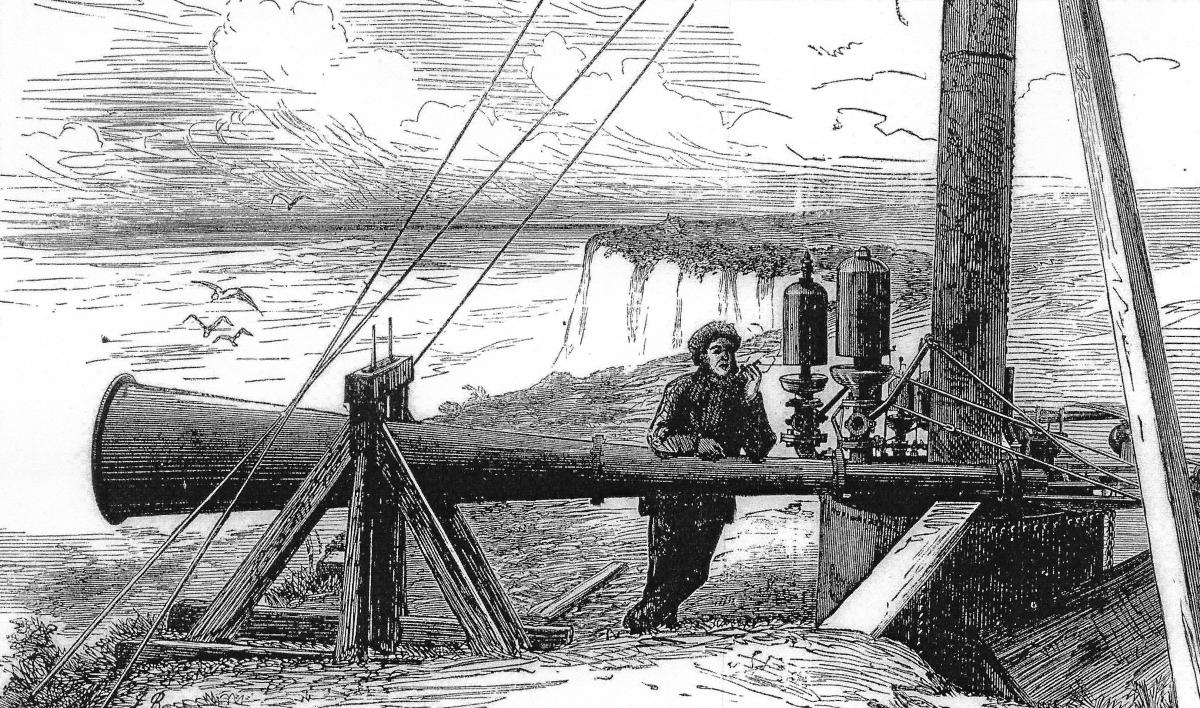
Fog Siren with Whistles
Beeeohhhhh, the mournful sound of the fog signal hooting and echoing across a bay shrouded in gray. It seems as though that sound must have always been part of the bayscape. But, in fact, fog (correctly termed, sound) signals are relative newcomers to the field of navigational aids, and the most popular of them, the diaphone and diaphragms, are of the 20th century.
Since the mighty Pharos of Alexandria, Egypt (circa 280 B.C.) mariners have had, after a fashion, a light to guide them into port or clear of dangerous reefs. Although the light signal from the lighthouse tower left much to be desired until the 18th century, there was some sort of light to guide the seafarer. But light, no matter how powerful, cannot penetrate fog and other conditions of reduced visibility.
The navigator also relied on stars when at sea. Celestial navigation gave him an idea within a mile or two of his vessel’s location. This was certainly not adequate when running close to shore, but sufficient for crossing the ocean. The early mariner also had his lead line to assist him to navigate into the ports of the world. When a ship approached a restricted channel or harbor entrance the leadsman constantly cast a lead line, which gave the navigator, pilot or captain a running commentary on the depth of the water. In the bottom of the lead was a depression filled with tallow. The tallow picked up bits of shell, small rocks, sand and other items from the bottom. The mariner or pilot familiar with an area could tell, more or less, where he was in a channel by the type of evidence stuck to the tallow. Although not an exact science it was better than nothing during periods of reduced visibility prior to fog signals.
When reduced visibility set in during the days of sail the mariner at sea, unable to see his stars, had only dead reckoning upon which to rely. Near shore he listened for the crash of surf, used his lead line and often dropped the “hook” until visibility improved.
The propagation of sound is not a constant, especially during periods of fog. Cold and warm layers of air cause sound to deflect, skip, bounce, echo and sometimes stop cold. The sound from a fog signal might be heard at one mile, not at two miles and again at three. A mariner thinks he hears a fog signal from one direction, when in fact it originated some 45 degrees to the right…or 30 degrees to the left. And distances cannot be determined with any accuracy. Not only is it hard to tell the distance one hears a signal, it is impossible to predict that a signal can be heard at a certain range. A signal “rated” for four miles might be heard at only two miles or, given the right atmospherics, 8 miles.
Navigating by sound is less than ideal and often, a tricky way to maneuver during reduced visibility. Still until the advent of on board electronic navigation equipment (radio direction finders, depth finders, radar and LORAN) sound signals were the mariners best friend during periods of reduced visibility…and certainly of more assistance that groping along with only the information supplied by a lead line.
The first fog signals were rockets and cannons (or fog guns) developed in Europe in the 18th century. The first fog signal in this country was a cannon, which was installed at our first light station, Boston, in 1719. Ships entering Boston harbor fired a cannon and the keeper responded in kind. This gave the mariner a fairly good idea of the direction of the Boston Lighthouse. Rockets were never employed in this country. A fog gun was also used at West Quoddy Head, ME. It was a carronade, 5 feet long, with a bore of 5 ¼ inches and charged with four pounds of powder. The gun was fired on foggy days when the Boston steamer approached the station from St. John. They began firing the gun when they heard the steamer’s whistle, usually about 6 miles off. They continued firing the gun as fast as they could load it until the steamer answered with her whistle, somewhere around two miles.
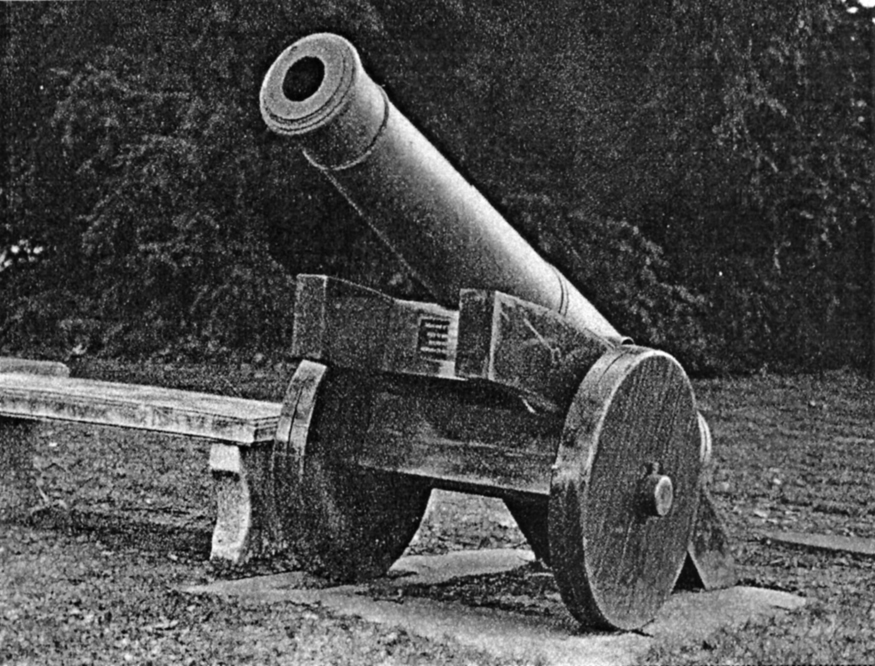
Boston Fog Gun
In later years Professor Henry, of the Lighthouse Board stated, “The gun was abandoned because of the danger attending its use, the length of interval between successive explosions, and the brief duration of the sound, which renders it difficult to determine its direction with accuracy.”
The first fog signal on the west coast was also a gun. In 1857 the service installed a 24 pounder at Point Bonita, hired a retired Army sergeant and instructed him to fire it on the half hour during periods of fog. Armed with his marching orders Sergeant Mahony set about his task. What the service didn’t know was that Point Bonita experienced over 1,000 hours of fog or “thick” weather a year. In short order the district office received a letter from the good sergeant stating, “I cannot find any person here to relieve me, not five minutes. I have been up three days and nights and had only two hours’ rest, and am nearly used up. All the rest I would require in the twenty-four hours is two, if I could only get it.” During the first year he fired 1,390 rounds, expending 5,560 pounds of black gunpowder at a cost of $1,487. The district did send him an assistant, but in the second year of operation there were 1,582 discharges expending $2,000 of black powder, three times the sergeant’s salary. So by the end of that year the signal was discontinued.
The next type of signal consistently used in this country was the bell, at first rung by hand. In 1837 the service had experimented with a metal triangle at the West Quoddy Head light station. It was constructed of a metal bar 2 1/8” by 14 1/2 feet bent into shape, and rung by hand…It was not a success. At first bells were also rung by hand.
One can well imagine what a chore it was to ring a bell signal by hand in areas of the coast where fog lasted for days on end. Responding to the need for an automatically rung bell, Andrew Morse, Jr. developed the “perpetual fog bell” and installed it at the Whitehead Lighthouse at the entrance to Penobscot Bay, ME in 1839. This was an elaborate device consisting of a “boom” floating in the surf, which rose and fell on the swells causing weights of 2,000 lbs. to be wound up. The descending weights drove both the regulating and striking apparatus. The striking and regulating part of the device worked fairly well, but the “boom” was often torn apart by the sea and the signal was soon discontinued.
Although this clockwork device was unsuccessful, it was the predecessor of the eventual clockwork mechanism powered by a descending weight that was introduced in the next few years. Three of the primary manufactures of bell strikers were Gamewell, Stevens and Daboll. The first two were town and church clock manufacturers and the third, Celadon Daboll, an inventor of other sound signals.
The Rube Goldberg looking clockwork (about the size of a pedestal sewing machine) was powered by a descending weight dampened by a governor. When a cam dictated, a heavy spring released a sledgehammer, which struck a bell weighing up to 4,000 lbs. Sometimes the automatic striking machinery was incorporated into the tower or lighthouse and occasionally in a separate bell house. At first some of the bell houses were constructed to jut out over a cliff, allowing the weight to descend beneath the structure, However, this placed the weight and attendant wire ropes in proximity to salt spray and the elements and the wire rope often parted dropping the weights into the water. The service remedied this by building a weight tower behind the bell house or constructing a pyramidal tower that was tall enough for a sufficient weight drop. The weights were wound up by hand. Many of the automatic bell strikers were good for 10,000 strikes of the bell. The frequency of winding depended on the characteristic of the signal of a station; one winding a day for a characteristic of 2 blows every 15 seconds or every four days at a station that had a one blow every 30 second signal.
While rather eccentric in appearance they were by and large, rather reliable and bell strikers lasted well into the 20th century. One bell striker that did fail does provide an interesting story. Mr. Juliet Nichols was the Keeper of the Point Knox lighthouse on Angel Island in San Francisco Bay from 1902 to 1914. She was the widow of Commander Nichols, USN who had been the inspector of the California District (1892 to 1895). He died during the Spanish American War and she was later offered the keeper’s position.
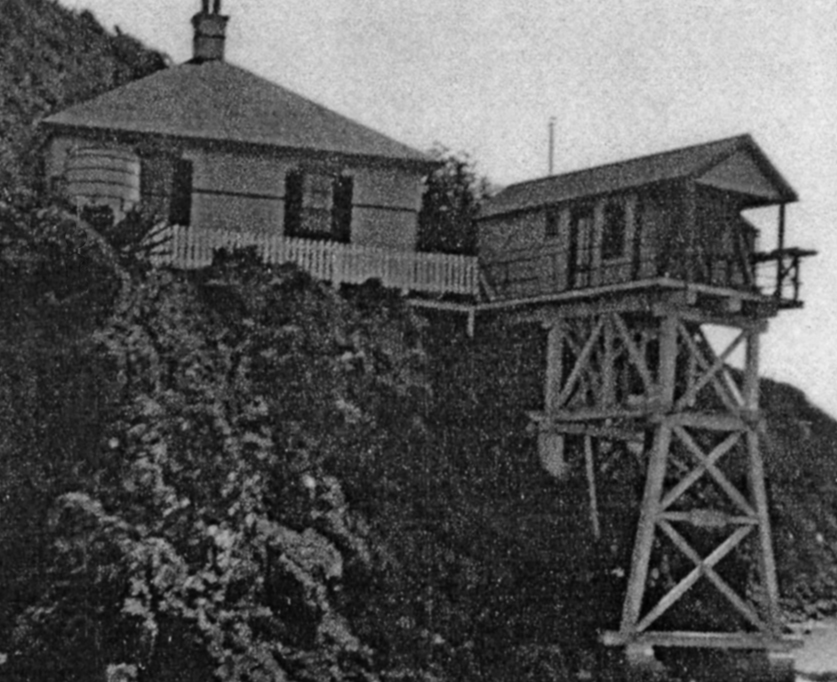
Point Knox Fog Signal Building
On July 2, 1906 the fog rolled into the Bay and Mrs. Nichols dutifully set the fog bell striking machinery in motion…and it failed! She was the sole keeper of the station and had no way to contact the District, or anyone for assistance. She knew the importance of the bell to the ferries that passed Point Knox enroute to Sausalito. Being a dedicated keeper, she took an ordinary nail hammer and began ringing the bell by hand. The characteristic was two blows every 15 seconds. The fog stayed and Juliet remained at her post; for 20 hours and 22 minutes she rang the bell by hand. She was presented a service award for her feat and appeared as a heroine in several publications, including the National Geographic magazine. Although her station has been razed the 4,000-pound bell, with hammer marks clearly visible, remains at the site.
Experiments with bells proved that the rapidity of the bell strokes was related to the distances that a bell signal could be heard: 15, 25 and 60 strokes a minute were in ratio to 1, 1.14 and 1.29 miles.
Several countries experimented with bells (as well as other signals) in the mid 19th century. Mr. Cunningham, of the Scottish Lighthouse Service, stated that the 2 ¼ ton bell at Howth, Ireland, struck four times a minute by a 60 pound hammer, could be heard only one mile to windward against a light breeze during fog. He also reflected that he doubted if the bells at the Bell Rock and Skerryvore lighthouses were ever responsible for saving a single vessel from wreck during fog and does not recall an instance of a vessel reporting that she was warned and put about in fog or ascertained her position because of either bell signal. General Duanne, U.S. Army said, “A bell…cannot be considered an efficient fog signal on the sea coast. In calm weather it cannot be heard half the time at a distance greater than one mile, while in rough water the noise of the surf will drown its sound to seaward altogether.” The French placed a hemispherical iron reflector behind bell signals in an effort to increase the distance heard.
Over the years bells have been required on ships by international code to be rung at regular intervals during period of fog. But, interestingly, Turkish ships are allowed to substitute a gong or a gun, as the use of bells is forbidden to the followers of Mohammed.
Celadon Daboll, of New London, CT also developed the first practical power operated fog signal other than bells. Responding to an announcement of the newly elected U.S. Lighthouse Board he developed a compressed air fog trumpet. He powered his signal by horsepower or by hand. Daboll made two designs for his horse powered signal: one had a horse walking a ramp that compressed or pumped air into a holding tank, the other design required the horse to walk in circles, around the tank. Air could also be pumped into the tanks by hand. His first signal was placed aboard the Bartlett Reef Lightship off New London, CT and, not being practical for horses, was powered manually. When enough air pressure was present in the tank a valve was released and the air passed through a locomotive whistle or reed trumpet. The trumpet was similar in principle to a vibrating clarinet reed. However, the trumpet reed was steel, 10 inches long, 2 ¼ inches wide and tapered in thickness from one inch at the fixed end to ½ inch at the free end. The signal proved successful and 1851 a horse-powered signal was installed at the Beavertail, RI lighthouse as an experiment. Mr. Daboll apparently established the signal at his cost hoping for eventual approval and payment from the government.
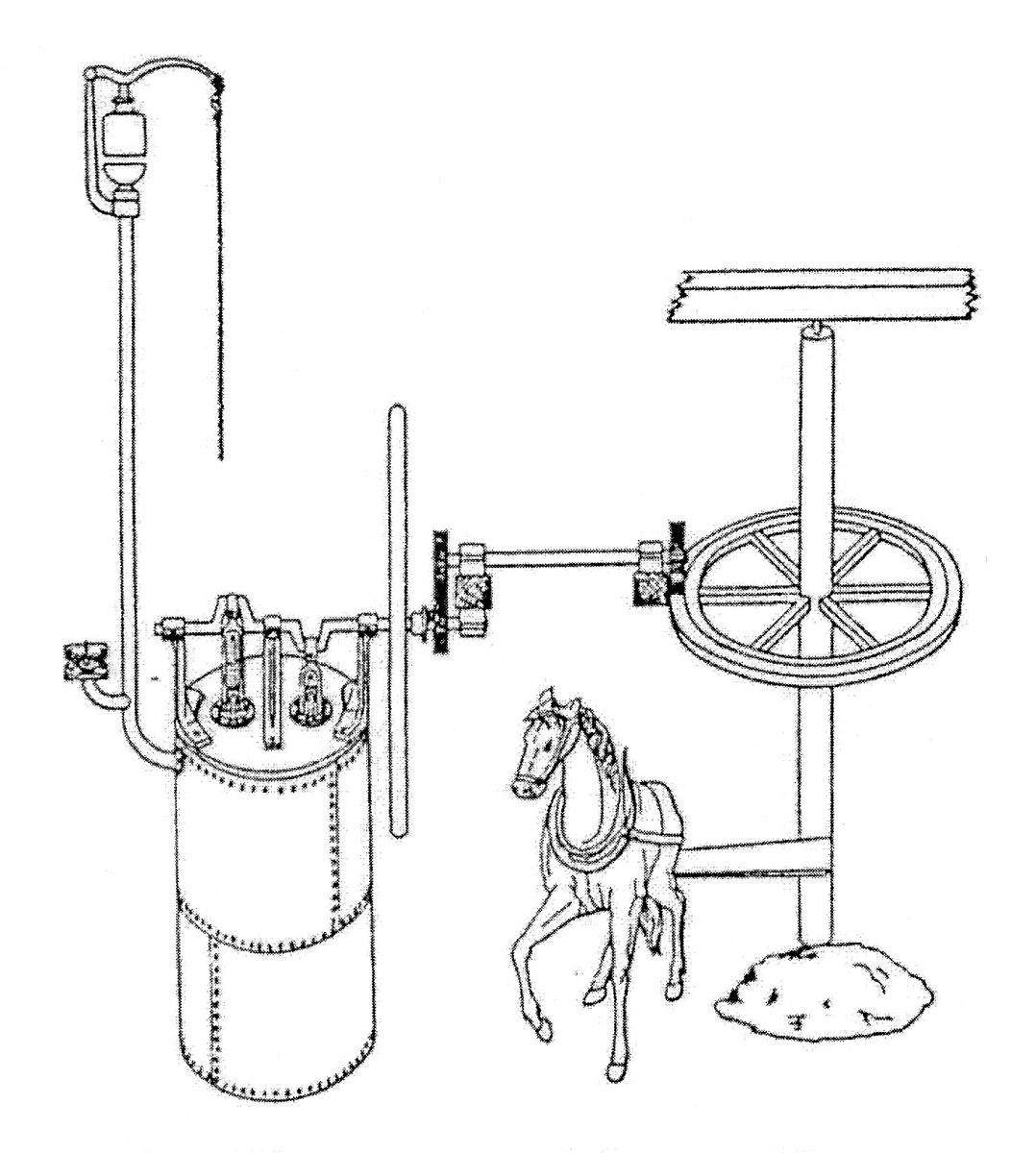
Horse Powered Fog Signal
Prior to this an Act of Congress in September 1850 provided $2,500 for the establishing fog signals at Execution Rocks & Little Gull Island in New York, Beavertail, RI lighthouses and aboard the Bartlett’s Reef lightship. But before any funds were spent the Secretary of the Treasury, Thomas Corwin, instructed the Lighthouse Board to investigate the new signal at Beavertail.
W.B. Shubrick, President of the new Lighthouse Board, reported to the Secretary of the Treasury ”Sir: The lighthouse board specially instructed by the department have visited the Beavertail lighthouse, and examined the fog whistle of Mr. Daboll.
The board had favorable opportunity to witness and judge of the power of the whistle in passing up the sound, on the morning of the 29th ultimo. They left New York on the evening of the 29th, in the steamer Empire City; the early part of the night was clear, but as the steamer approached the east end of Long Island and the passage between Beavertail and Brenton’s Reef, the fog became so dense that navigation would have become extremely hazardous without some better guide than the compass and the lead, and this was found in the whistle, which sent its clear and shrill notes far over the water, indicating the bearing of the point on which it is placed, much more accurately than a bell or gun would have done, and enabling the steamer to arrive, with little loss of time, at her port.”
“The board recommended the expenditure of the appropriations made by Congress for the purpose of placing the whistle at other points contemplated, and are of the opinion that the substitution of horsepower for hand power, is very desirable in all cases which will admit it.”
Daboll wrote a letter to the Secretary of the Treasury stating he could construct the signals at the three lighthouses and one lightship for the amount appropriated by Congress and remarked, “…The horsepower machine now at Beavertail will not cost more to work, per annum, than hand power, or what is paid for ringing or tending fog-bells, and it has advantages over manual labor, and will at all times insure a greater and more uniform pressure – being heard, as will be proved by vouchers, from two and a half to ten miles.”
However, the Captain of a Revenue Service cutter, Green Waldren, disagreed with the horsepower statement of Daboll. Waldren was sent by Treasury to check out the signal. He stated, “The machinery (of the fog signal) is exceedingly simple, being destitute of complication, is easily understood, even by the most illiterate…I would most respectfully recommend Daboll’s fog horn, to be worked by hand. This would give the navigator a better opportunity to determine his position between [Little] Gull Island and the lightship at Bartlett’s Reef in thick weather…” One wonders how the navigator can distinguish between a horse operated machine and one operated by humans.
Asked their opinion, several mariners [the Collector of Customs at Newport and others] all responded favorably to Daboll’s new signal. Many stated that they could hear it in excess of six miles [over sea and land]…”I often hear it when about the streets [of Newport, some six miles away], even if there is considerable noise of carriages, etc.”
The Beavertail station eventually played a major role in fog signal experiments over the years. Other stations received the signal and the fact was noted in the 1852 Light List, when bells and trumpets were listed as aids to navigation for the first time. While the signal was successful, it wasn’t entirely satisfactory. Although the sound was more penetrating than that of a bell, the expense and inconvenience of the maintenance of the horse prevented its extensive use. But the invention of the caloric steam engine gave Daboll’s signal new life and widespread use.
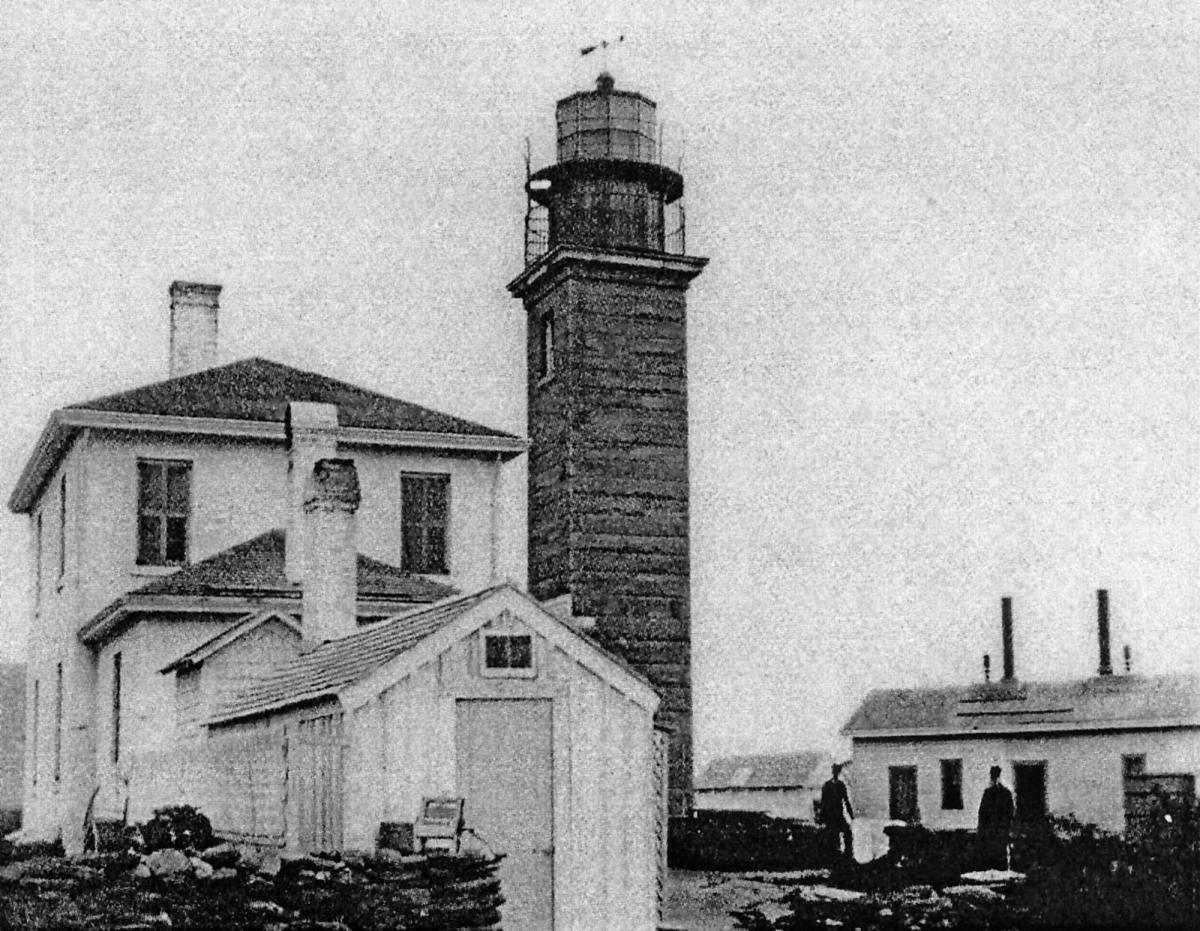
Beavertail Lighthouse RI was the site of many early fog signal experiments
The most successful caloric engine was invented by John Ericsson of Monitor fame. It was first made public in 1833 and was given a name to distinguish it from earlier, not so successful, hot air engines. The engine had a piston like canister driven up and down by the expansion of air heated by a coal fire or gas flame. The engine improved the lot of air signals, but eventually they were replaced by steam fog signals, the steam boiler being far more efficient than the caloric engine.
Steam powered whistles were investigated in 1855, with a 5” ships whistle being installed at the Beavertail RI lighthouse in 1857. This signal was subsequently replaced by a reed horn signal powered by the caloric engine in 1866. The 1850’s and 60’s was an age of intense experimentation for the Lighthouse Service. The newly appointed U.S. Lighthouse Board was busy trying to improve the aids to navigation of this country, which had lagged far behind most European countries for a number of years.
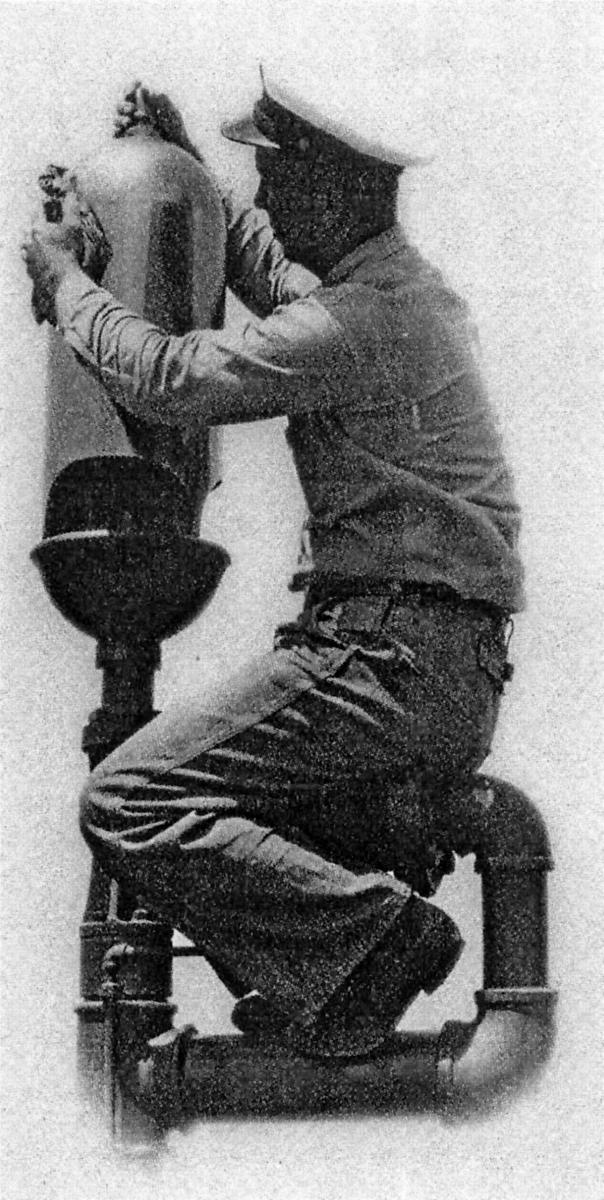
Keeper Polishing a 1st Class 12 inch Whistle
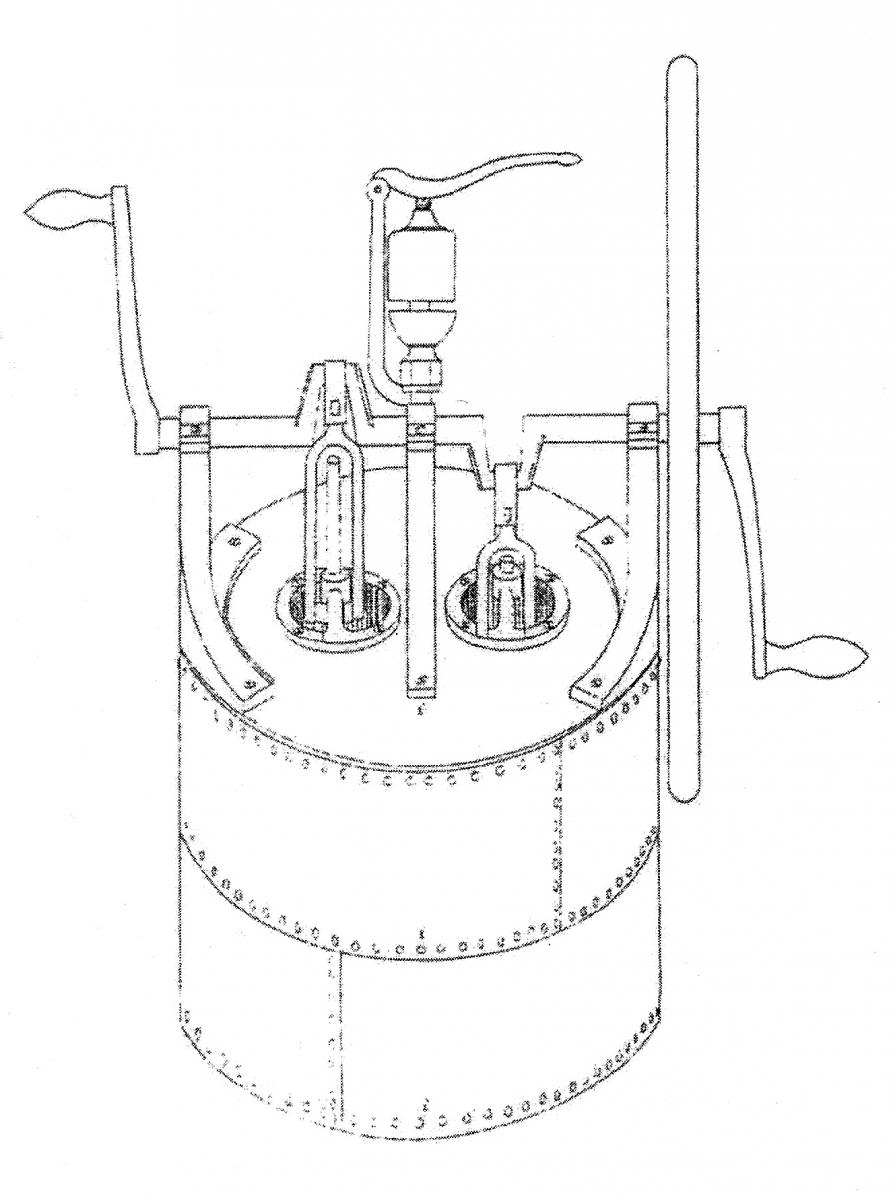
Hand Powered version of Daboll's Air Whistle
In the 1867 report of the Lighthouse Board the service reports, “Complaints have been made in this [1st District] and other districts as to fog signals, and these are not without foundation. The subject, however, is one of much complexity, involving, as it does, not only great mechanical difficulties, but also sectional prejudices, and personal interests as to the kind of instrument to be employed.” The report stated that at certain locations more powerful signals were needed, bells and guns had been proven ineffective and that the year before a trumpet operated by heated air was inefficient. The report stated, “It is probable that, to supply the requisite motive power to produce more efficient signals, recourse must be had to the use of steam. The board have, however, hesitated to introduce this power, not only on account of the expense of fuel and attendance, but also on that of the danger of intrusting the management of an agent of so much explosive energy to ordinary lighthouse keepers.” The board did note that safety improvements had recently been made to steam boilers in recent years and that they would conduct experiments as to suitability.
The first stations regularly equipped with steam whistles were West Quoddy Head and Cape Elizabeth, ME when they officially went operational in 1869. They employed a 10” locomotive or ships whistle. This was the most powerful signal up to this time. European nations shunned use of a locomotive whistle as a signal as it closely resembled a ship’s whistle. It was felt that a vessel, in reduced visibility, would think it was encountering another vessel. When vessels “talk” to one another one blast means “let’s pass port side to port side (left to left). A vessel “hearing” a lighthouse fog signal might think he was being asked to come to port, or starboard and, depending on his location, this could have disastrous results.
One story, unsubstantiated, concerns a German Ship that departed San Francisco Bay around 1910 and headed south along the coast. The ship entered heavy fog and began sounding her signal. Around Pigeon Point the Captain heard a ship’s whistle sounding two blasts, which “requests” a starboard to starboard (or right side to right side) passage. The German ship came left (to port) and ran aground at Pigeon Point. The two whistle blasts came from the Pigeon Point Lighthouse fog signal. Pretty soon there were 150 German sailors knocking on the keeper’s door in the early morning hours. Mariners were no doubt confused by lighthouse whistles in the fog on a few occasions, but whistle fog signals continued to be used at lighthouses throughout the United States for many years.
Another sound signal that arose from this period of experimentation was the siren. It was first tested in 1867 and installed at the Sandy Hook East Beacon in 1868. Originally this signal consisted of a large cast iron trumpet. In the mouthpiece of the trumpet a slotted revolving disc, or plate, was placed on a fixed slotted disc (seat). A slotted disc valve was placed on the back of the seated disc, which produced the characteristic. The chamber containing the discs was directly affixed to the steam dome of the boiler. About 70 lbs of steam was forced through the fixed and rotating discs and the interruptions of the jets of steam produced the note. Eventually the disc type of siren was replaced by a rotation cylinder with peripheral slots (called the rotor) placed inside a casing, also with slots (termed the stator).
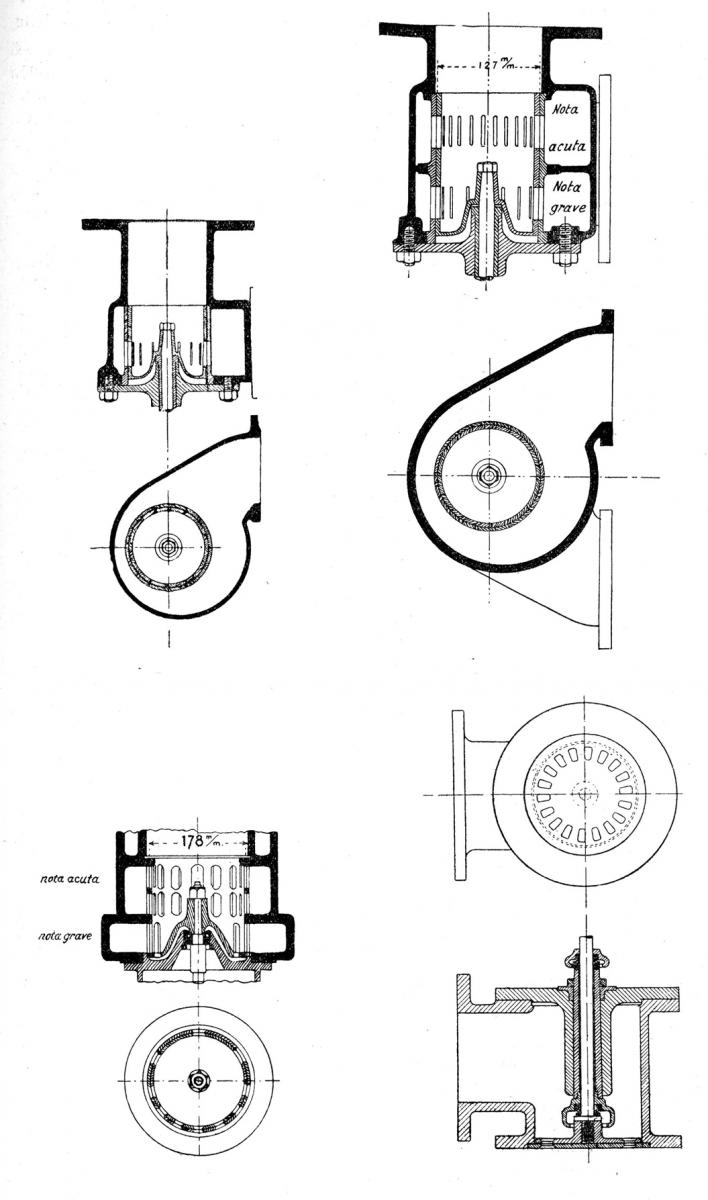
Fog Siren Components
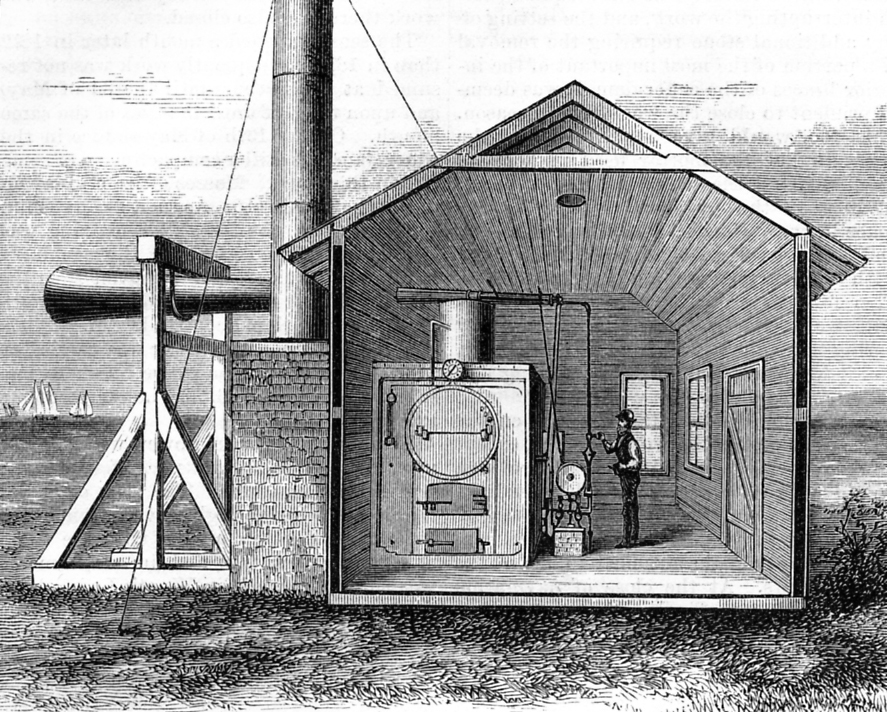
Brown's Steam Powered Fog Siren
One reporter, after hearing a siren for the first time, described it as having “a screech like an army of panthers, weird and prolonged, gradually lowering in note until after half a minute it becomes the roar of a thousand mad bulls, with intermediate voices suggestive of the wail of a lost soul, the moan of a bottomless pit and the groan of a disabled elevator.” This was not exactly conducive to lulling a light sleeper to dream land.
By 1870 the trumpet, whistle, bell and siren were perfected, and all standard fog signals. Because the bell had poor resonance and carrying power it was not effective at coastal locations where wind would dampen the signal. Coastal stations received the steam whistle or siren; the reed horn trumpet was installed at less exposed locations and bells in bays, estuaries and along rivers. Most Chesapeake Bay lighthouses had a bell signal incorporated into the combination keeper’s quarters-light towers (generally the bells ranged in weight from 1,200 to 4,000 lbs).
In the early 1870’s the service conducted extensive experiments with different types of fog signals at New Haven, CT, Sandy Hook, NJ, Boston, Portland and other stations. In 1874 Joseph Henry, then chairman of the Lighthouse Board, wrote a report concerning the tests. He began by stating, “Among the impediments to navigation none are perhaps more to be dreaded than those which arise from fogs, and consequently the nature of this impediment and the means which may be devised for obviating it are objects of great interest to the mariner.”
The tests involved a double whistle (or steam gong), factory whistle, locomotive whistle, siren, trumpet, bell and a comparison between the different powering apparatus for the same type of signals. The tests were conducted on sail and motor vessels. The tests indicated that the siren was the most penetrating. The top three signals were assigned relative power: 1st class siren – 9, 12” locomotive whistle – 7, and 1st class Daboll trumpet – 4. But other factors also came into play. Consumption of fuel and water; the siren consumed about 180 lbs. of coal and 126 gallons of water an hour. The 12” whistle 60 lbs. of coal and 40 gallons of water an hour and the Daboll trumpet only 20 lbs. of coal an hour. Relative expenditure of fuel was: siren 9, whistle 3, and trumpet 1.
He also noted that the siren was the most complicated of the three devices with many moving parts, a high velocity of rotation (1,800 – 2,400 rpm), and developed a large quantity of steam, which would be dangerous. “The constant attention of the keeper is required to regulate the fire, the supply of water to the boiler, of oil to the journals, etc.,” he said.
Of the Daboll Trumpet (powered by a caloric engine) he stated, ”… required little fuel, no water and is perfectly safe as regards danger from explosion, it would at first glance, appear to be the most suitable power that could be applied to fog signals… It was, however, found to be so liable to accident and so difficult to repair that of late years it has almost been entirely rejected.”
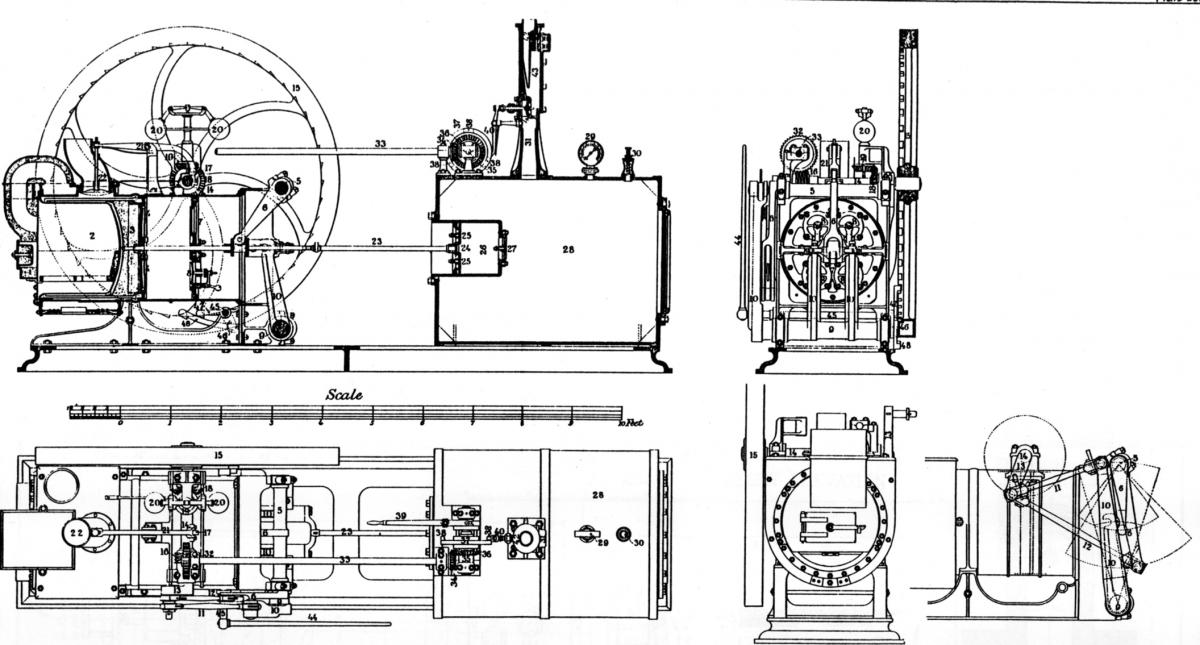
Daboll's Fog Signal with Erickson Engine
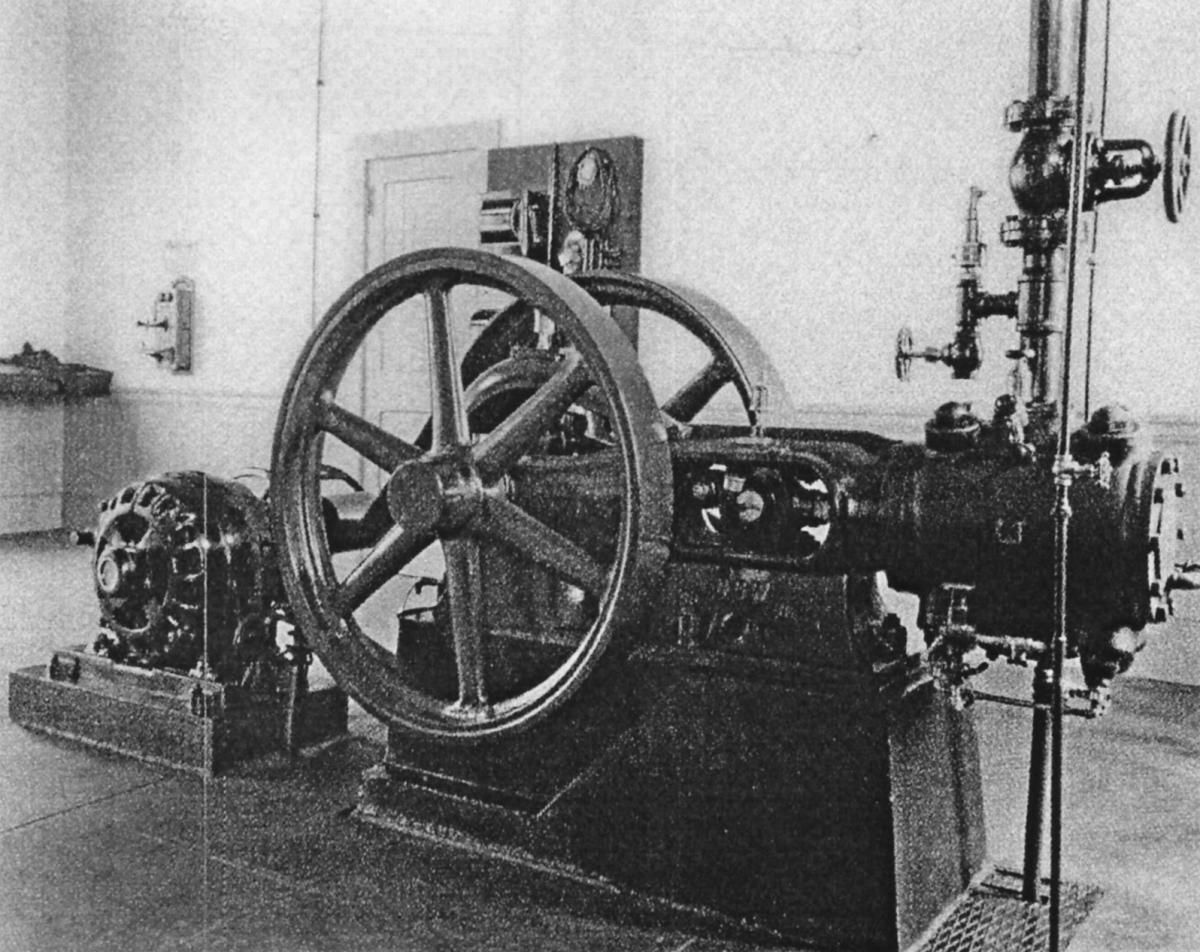
Later on Oil Engines were used to power fog signals
Of the steam whistle – He found that required much less steam than the siren, less pressure, the machinery was simple and that the signal may be operated by hand should the engine become disabled.
“It will thus,” he said, “be seen that the siren is the most expensive of the fog signals as regards maintenance, and that it is adapted only to such stations as are abundantly supplied with water and situated in the vicinity of machine shops where necessary repairs can be promptly made” He went on to state that there are important locations where the loudest possible signal (siren) must be employed whatever the drawbacks. And in those cases the stations should be supplied with siren in duplicate, with ample spare parts and even a keeper who is a licensed engineer.
The investigation tested locomotive whistles from 2½ inch diameter to 18 inches in diameter. Although the larger whistles were slightly more powerful, the increased energy necessary to power them was not worth the cost for so little gain in strength. Thus the service settled on 10” and 12” whistles as standards.
In 1878 there were 55 fog signals operated by steam or hot air and 93 bells sounded by automatic bell strikers. That year, in their annual plea for more funds, the Board reported. “ The failure of a single important fog signal to give forth its warning notes at the proper time may lead to the loss of property sufficient to keep all in the United States in repair for years, to say nothing of the possible loss of life. The mariner in the fog depends almost as much on the fog signal as he does in clear weather on the light. To ensure certainty of its being sounded they should be in duplicate at each station, so that in case of an accident to one, an occurrence by no means rare in steam-machinery, the other is ready for service.” And, at most stations this did become the norm.
In 1898 the Board reported that they were revising plans of the steam siren to update it and “…Oil engines have been installed at a number of stations to replace caloric engines. There are now available several excellent forms of the oil engine, and its use for both fog signal and electric-light apparatus at stations where questions of water and fuel supply or other reasons render steam machinery objectionable is likely to become more extended. By this time many of the districts were starting to replace their original, hastily constructed fog signal buildings with more substantial structures.
By the turn of the century the electric siren (called a Siren-O) was developed to replace the steam-powered siren. This allowed the signal to be turned on almost instantly. A steam-powered signal often required 10 or more minutes to get up a head of steam sufficient to power a signal. Another innovation at the turn of the century was the introduction of the diesel engine powered air compressor. Again, signals could be energized much more rapidly. But, this was a real boon to the keepers. Boiler furnaces required keepers to shovel one ton of coal (or 2/3 cord of wood) for every ten hours of operation. That’s a lot of dirty work. First they had to manhandle the 90-pound sacks of coal up to the coalhouse from the landing and empty them.
When fog rolled in they each spent a four-hour shift shoveling coal and during good visibility the boilers, fireboxes and related equipment had to be cleaned and repaired. And, of course, the soot from the chimney sullied the station buildings. The air compressor powered by a diesel engine was far less work and much cleaner than the old method.
By 1900 there were 377 fog signals, exclusive of those on buoys, around the country, with an annual operating cost of $200,000. Fog signals had become big business.
Around the turn of the century a Canadian firm developed the well-known and much loved diaphone (Super Typhon) sound signal. It came in several models; as a single tone, two tone (F2T) and chime. However, it wasn’t introduced into the United States until 1914. The Lighthouse Service was so taken with this new (beeohhh) signal that it acquired the drawings, patterns and rights to manufacture the equipment in this country, which was carried out by a New Jersey firm. Diaphones, with their deep throaty sound, carried as well as any signal developed to that date and were much more “population friendly” than the siren and reed horn. Many foggy areas of the coast were growing by leaps and bounds and complaints began to arrive at district offices from a population trying to sleep with a siren (“…roar of a thousand mad bulls…”) seemingly in the next room.
Diaphones, though, were difficult and expensive to maintain. Each horn came with three sleeves of brass that vibrated (back and forth) in a chamber of the horn. When one wore out it was replaced with one of the spares especially designed for that horn. When all three were worn out a replacement had to be manufactured requiring a skill not always available.
In 1929 the service developed a diaphragm horn. This horn, was far less expensive to manufacture and to service. The sound mechanism consists of two metal discs each about 1/16” in thickness. One disc is solid and 5 7/8” in diameter and the other 6 ¾ “ in diameter with a 3” hole in the middle. The discs are placed together in the horn and as air passes between them the sound is produced. The plates are almost indestructible and the major maintenance of the entire apparatus is a regasketing of the air-compressor about every seven years at a cost of less than $100.
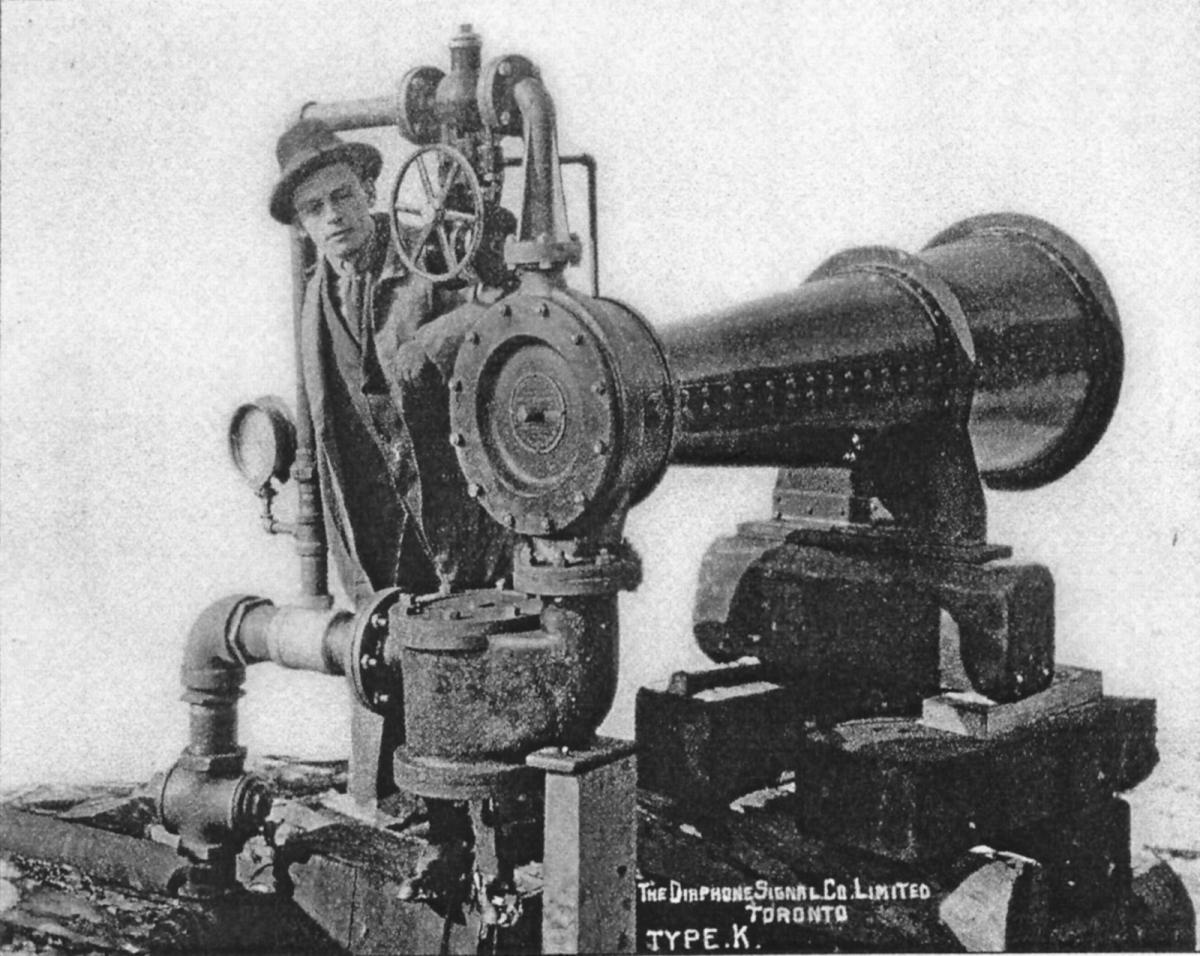
Directional Horn fitted to a Type 'K' Diaphone
By the 1930’s large harbors like New York, Boston and San Francisco had a vast variety of signals. As an example, San Francisco Bay in 1936 was alive with a cacophony of 51 diaphones, whistles, bells and sirens all moaning, hooting, screeching and dinging in a variety of characteristics, each vying for the attention of the mariner.
The Coast Guard took over the Lighthouse Service in 1939 and after WWII began to make sweeping changes in the aids to navigation of this country. Compressed air strikers were replaced by battery-powered strikers that eventually tore themselves apart. Trumpets were gone by the 1950’s and sirens and whistle signals by the late 1960’s. Slowly the service phased in new electronic horns and phased out the difficult to maintain diaphones (the last were those on lightships) leaving, today, just a few diaphragms and the new electronic pure tone signals in existence.
IALA (International Association of Lighthouse Authorities to which this country is a signatory) has decreed that fog signals are no longer necessary for the needs of navigation and the Coast Guard is slowly phasing out all fog signals. Those remaining, where fishing fleets or pilot pressure is strong, are a few diaphragms and one or two types of electronic “pure tone” signals. The more powerful is the ELG 300 and 500. These signals emit a beep of 142 decibels. 121 decibels is the threshold of pain and every increase of 3 decibels requires the power to be DOUBLED. Standing one meter from an ELG 300 signal will rupture eardrums. The smaller signal is termed an FA 232. Its electronic beep can be made to sound like a horn (of sorts) or a bell. The signal is rated at one mile. Both signals are extremely disturbing to a sleeping population and the Coast Guard has been required to discontinue them when their sound encroaches into residential areas.
In fact, the small signal really isn’t of much value. It’s almost impossible to hear on the bridge of any large vessel, or against the wind on any size vessel. The large signal can be heard at four miles under the right atmospheric conditions, but cannot be placed where it would disturb a residential area.
Slowly the Coast Guard is phasing out the few remaining and soothing BeeeoooH signals that echo throaty sounds across bays and harbors and along certain stretches of seacoast. That romantic sound will soon pass over the horizon along with the age of manned lighthouses and the tall ship. And these will be soon followed by the obnoxious “pure tone” horn, a signal that is of little value and very annoying. It will be hard to imagine Sam Spade sidling down the Hyde Street hill under haloed street lights in search of the Maltese Falcon, unaccompanied by the mournful bellow of the throaty diaphones oozing their sound through the dripping fog.
Unusual Fog Signals
The 1950 Atlantic Coast Light List includes a listing for the West Point Light 19, on the Hudson River, which states (in addition to information about the light) “BELL, electric, 1 stroke every 20 seconds. Operates automatically only by blast of a ship’s whistle.” Keeper Ken Black, of the Shore Village Museum, Rockland, ME, informed us of this unusually activated signal. As ships approached West Point they sounded their whistle and that automatically activated the bell for a certain duration. From our Light Lists it appears this bell fog signal became operational around 1948 or ’49 and was discontinued in 1965. We have no other information on this signal or if there were others established.
Echo Boards
In certain areas of the country, like California’s Sacramento Delta, the Lighthouse Service established “echo boards,” usually at bends of a channel or junctions of waterways. Ships approaching a bend would sound their whistle and the resultant echo gave the pilot or captain a vague idea of how far he was from the bend or junction, as well as warning any approaching vessel of his presence.
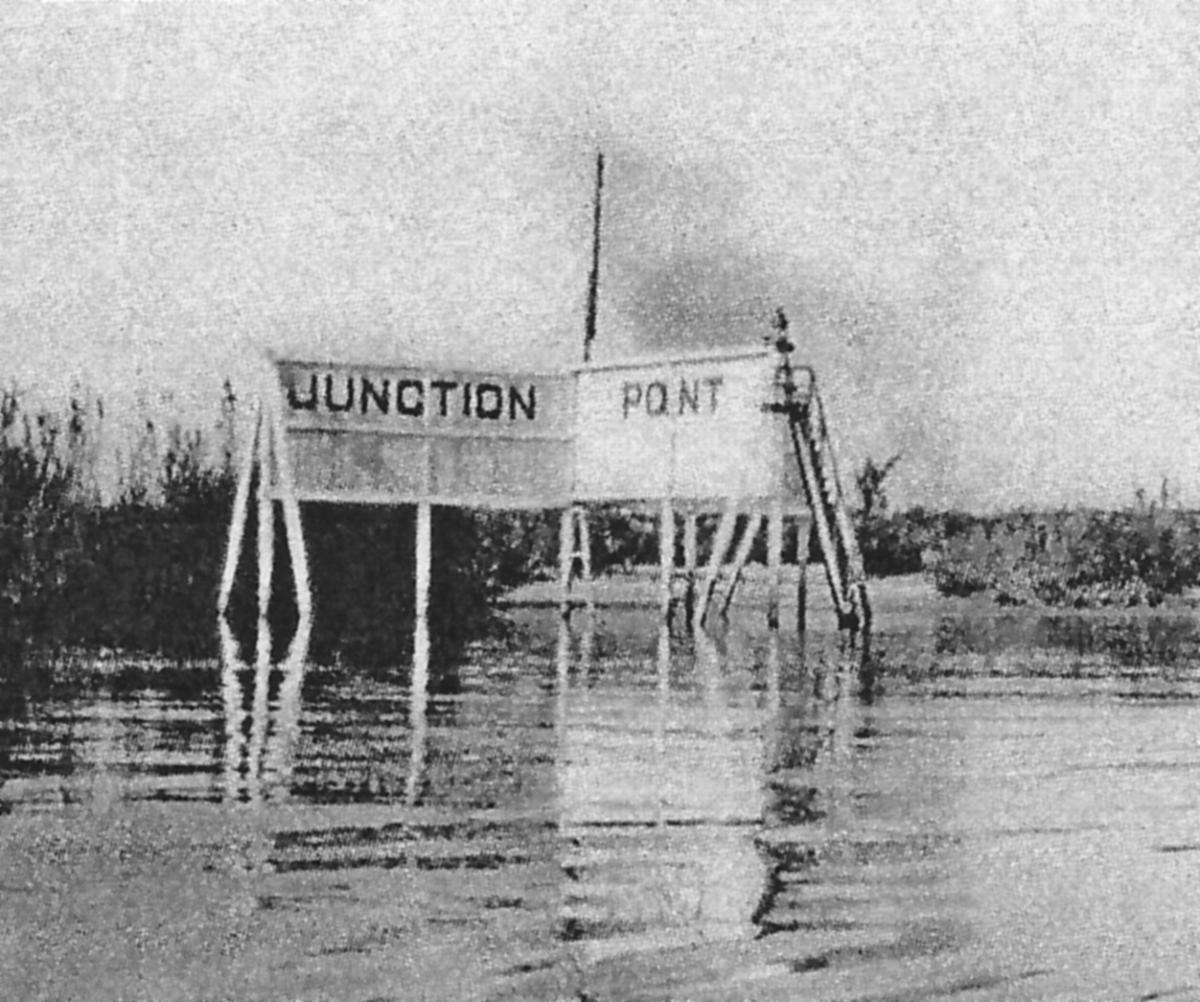
The Junction Point echo board in California's Sacramento Delta
Unusual Fog Signals - By Peter White
In 1855 the Farallon Island light first flashed across the waters guiding mariners to California’s Golden Gate warning them of the rocky menace of the jagged outcrops that form the Farallon Islands. But California’s northern coast is known for the thick pervasive summer fogs that neutralize the effect of any light.
In 1858, the wreck of the ship Lucas on the Farallons, with the loss of 23 lives, pointed to the need for a fog signal on the Farallon Islands. Faced with a shortage of money and materials, Hartman Bache, inspector of west coast lighthouses, resolved to use the energy of a natural force to power a fog signal. An early and colorful description comes to us from writer Charles Nordhoff, visitor to the Farallons in the 1870’s. “The light…is supplemented by a fog whistle which is one of the most curious contrivances of the kind in the world…one of the numerous caves worn into the rocks by the surf had a hole at the top, through which the incoming breakers violently expelled the air they carried before them…[the blowhole] has been utilized by the ingenuity of man. The mouth piece of the trumpet of a fog whistle is fixed against the aperture in the rock, and the breaker dashing in with venomous spite, or the huge bulging wave which would dash a ship to pieces and drown her crew in a single effort, now blows the fog whistle and warns the mariner off…The sound thus produced has been heard at a distance of…eight miles. It has a peculiar effect, because it has no regular period, depending upon the irregular incoming of the waves, and upon their similarly irregular force, it is blown somewhat as an idle boy would blow his penny trumpet.”
The blowhole was carefully bricked to an appropriate shape to accommodate the fog whistle, which was originally designed for use on the steam locomotive. The device had particular disadvantages. On a windy, but clear day, the whistle would sound incessantly. But when it was calm but foggy it was often quiescent, and it never operated during the hour of lowest tide when the mouth of the cave was exposed. Constructed in 1859, the unique fog signal operated for 14 years until a violent storm tore the whistle from the brickwork. The signal was replaced by a steam-powered siren in 1880.
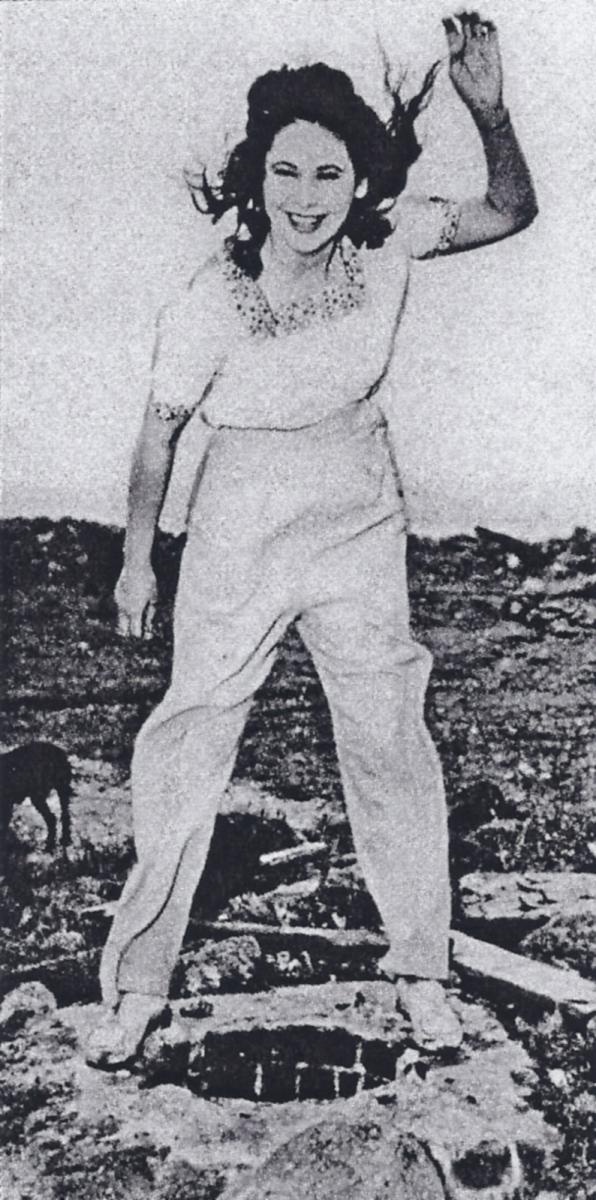
Coast Guard Keeper's wife blow-dries her hair at the Farallon Islands blowhole. Photo courtesy Ralph Shanks.
Submarine Bells
The world’s first electronic aid to navigation was introduced in 1901 with the perfection of the submarine bell by the Submarine Signal Company.
Experiments with sound underwater had been carried out for years. The foundation for this equipment was laid in 1862 at Lake Geneva, Switzerland by two scientists. One struck a submerged bell with a hammer while the other, ten miles away, heard the sound through a specially designed trumpet, also submerged.
In the ensuing years the Lighthouse Board conducted experiments with signaling underwater but could not overcome the ambient noises aboard ship, which blocked the incoming signals. Finally a group discovered that by hanging the receiving microphone over the side of a ship in a water-filled tank, secured to the ship, a bell signal could be received.
The perfected system consisted of underwater bells sending signals, two microphones (located underwater on either bow of the ship), and a box with two telephone type receivers on the bridge. The operator listening to both receivers could switch to either the port or starboard receiver and maneuver the vessel toward the weaker signal. When the signal was equally loud in both receivers then a bearing was taken off the compass, which indicated the direction of the signaling station. Like lights and other fog signals, each submarine bell station had its own characteristic.
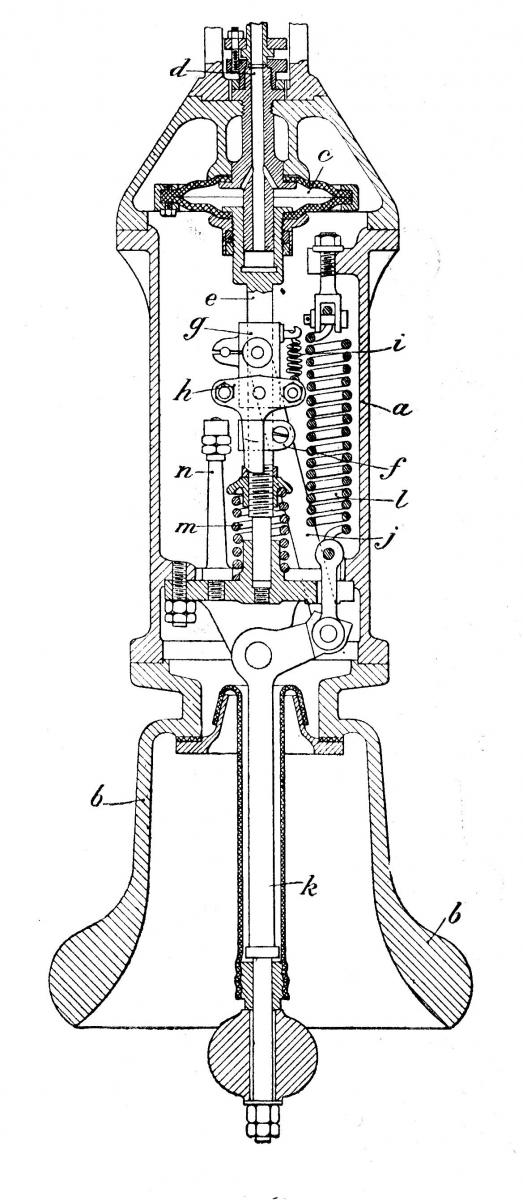
Submarine Bell Design
At first the Lighthouse Board was skeptical of the system. To prove their equipment was a viable aid to navigation the Submarine Signal Company established several signals and paid men to operate them. Finally the Board was convinced and signals were installed on four Massachusetts lightships: Pollack Rip, Hens and Chickens, Nantucket Shoals and Boston. The bells were rung by steam-powered plungers.
Shore stations received tripods with bells, which were submerged off shore and powered by an underwater electric cable from the station. A few submarine bells were hung beneath buoys and sea action energized the striking apparatus. During the first decade of the Submarine Signal Company (1901 – 1911) the signals became increasingly popular and submarine bells were installed in Canada, France, England, Brazil, Chili, China and several other countries.
In 1914 an oscillator was perfected that out performed the bell and was much easier to install and maintain. Plus, the oscillator could receive as well as send sounds. During one of the first tests of the equipment, sound was sent and received at a distance of 31 miles. They eventually learned that coded signals could be sent from ship to shore, ship to ship or shore to ship at distances up to 50 miles.
The submarine bell and its successor, the oscillator, were the predecessors of the depth finder and SONAR. Submarine bell signals continued in service and were, apparently, phased out around the start of WWII.
Radio beacons
In the 1920’s and 30’s the Lighthouse Service experimented with electronic signals and automatic bell strikers. They did develop a reliable bell striker powered by compressed air. One of the first electronic aids to navigation, the Radio Fog Signal (radio beacon), was first placed in service in 1921.The first set of stations consisted of the Ambrose and Fire Island lightships and the Sea Girt, NJ lighthouse. Each station broadcast a unique radio signal code on the same 300 kHz frequency (1 dash and 1 dot or 2 dashes, etc.) for a certain period each minute and then went silent for a certain period. The navigator, knowing the signals for a certain station would receive a bearing on his receiver and draw a line on the chart from the station he was receiving toward his position. Lines from the three stations formed a small triangle on the chart, which indicated the ship’s position. In subsequent years this type of sequenced signaling on the same frequencies gave way to continuously broadcast signals with each radio beacon station, in a particular geographical area, having its own frequency and coded characteristic. After this the mariner dialed in the frequency of the station for which he was interested in obtaining a position. Mariners have also used radio beacons as homing beacons, sometimes with disastrous results. The sister ship of the Titanic (the Olympic) homed in on the Nantucket Lightship in 1934 cutting the lightship in half and killing 7 of the crew.
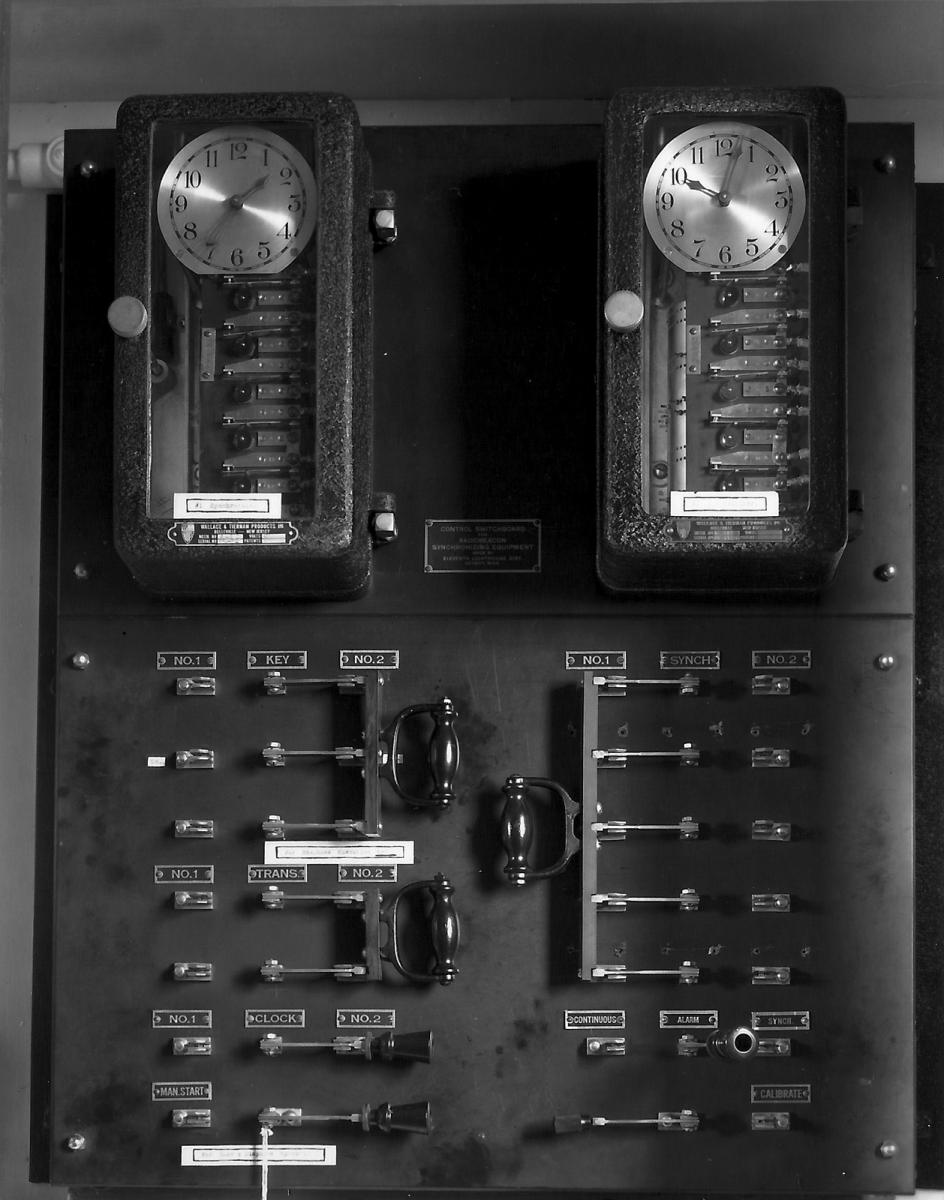
Radio Beacon Control Panel
Wave Actuated Sound Signals
Another class of fog signal is the wave-actuated signal located on buoys. Sound buoy signals include bells, gongs and whistles. Electronic battery or solar powered signals are also installed on a few buoys but are not wave actuated.
An Act approved on August 25, 1841 authorized the modification of a small light boat to be equipped “with a bell only…to be so fixed as to be rung by the motion of the sea.” However, these “bell boats” were not too successful as they often capsized.
The first true bell buoy was invented in 1852 by Lt. Brown, an officer assigned to the Lighthouse Service. His design incorporated a 300 lb. bell under which a cannon ball rolled around on a grooved plate. As the buoy rolled around in a seaway the cannon ball struck the sides of the bell. Today’s bell buoy has a fixed bell (usually 85 pounds) but clappers (swinging arms) mounted on each side of the buoy cage have replaced the bell.
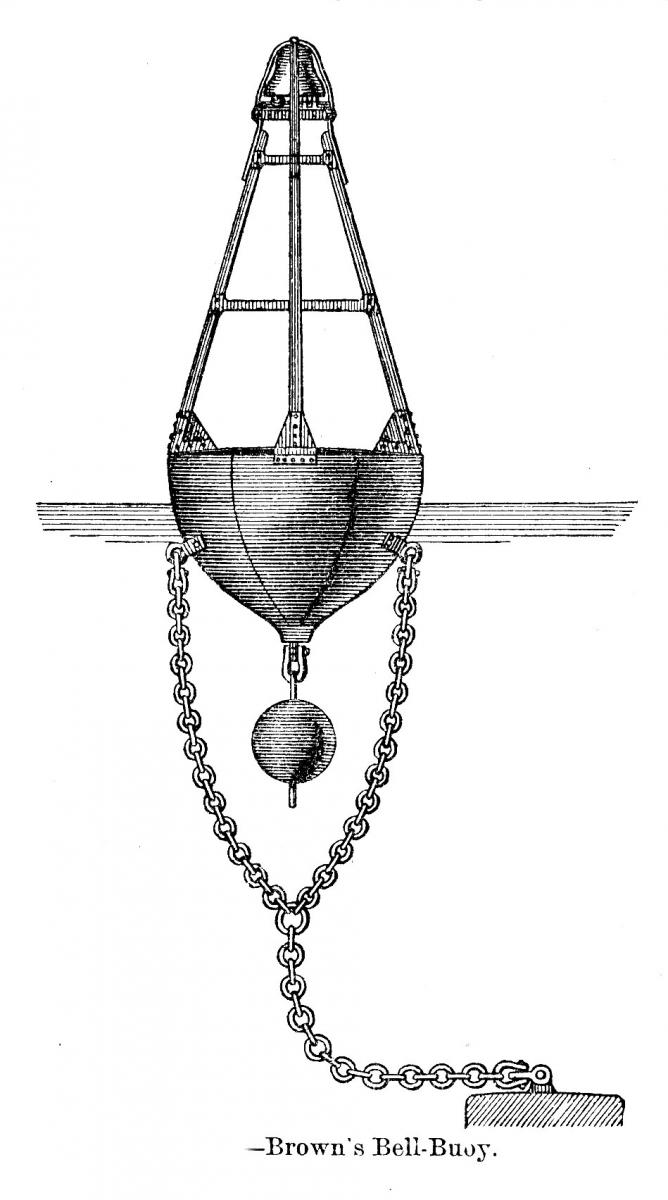
In 1876 John Courtenay, of Cornwall-on-Hudson invented the Whistle Buoy. His original buoy consisted of a large pear shaped buoy hull with a long hollow tube extending through it. The tube was open at the bottom and capped with a whistle. As the hull rode up and down in a seaway, air was forced up the tube and out through the whistle producing a mournful sound. Today’s whistle buoy resembles the gong and bell buoy above the waterline (with a hollow tube extending under the hull). The whistle is located in the area where the bell or gong appears on those sound buoys.
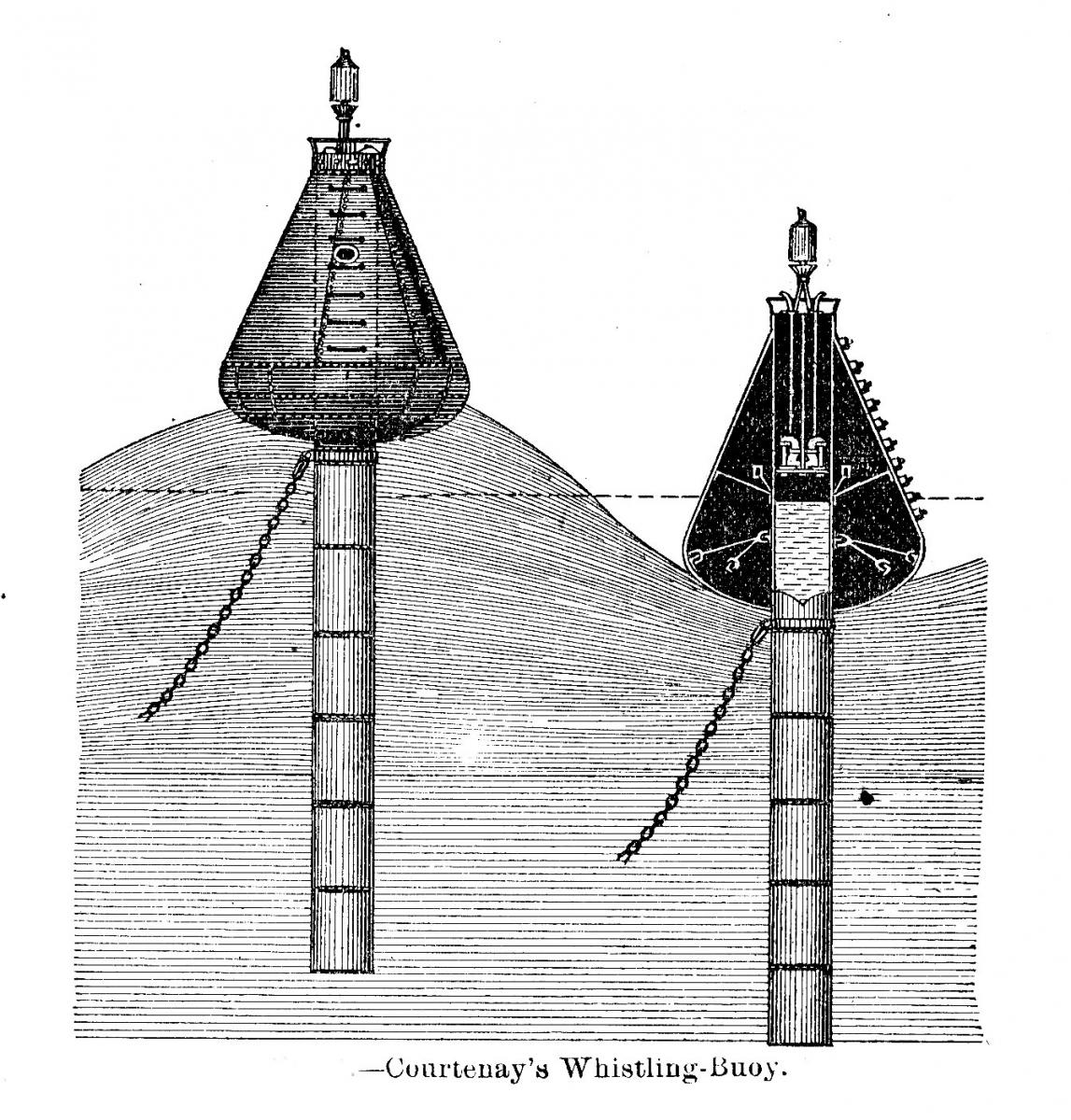
In recent years the Coast Guard has installed small FA-232 electronic (battery or solar powered) horns and bells on buoys. These signals have a high failure rate in exposed locations due to sea action and salt spray. They have proved successful in sheltered bays, harbors and estuaries. But like their shore-based counterparts they cannot be established near residential areas.
Sound buoys are lighted and unlighted. The ironic aspect of wave actuated sound buoys is the fact that they require a certain sea motion to work and usually when it is foggy, the sea is calm. Still they are an effective and inexpensive aid to navigation and will no doubt be with us for many years.
